Reimagining biological paradigms + inside the ARIA Summit
A deep dive conversation with Programme Directors Nathan Wolfe and Angie Burnett, plus on-demand content from our inaugural Summit.
What’s new at ARIA
Explore three breakthrough technologies ARIA is backing to help change the world. In a guest post for Sam Freedman’s Comment is Freed, ARIA CEO Ilan Gur shares how the UK can lead in the trillion-pound industries of tomorrow. Read it here.
Get to know the nine teams laying the foundation for more productive, resilient, and sustainable plants. We've announced the Creators working in Synthetic Plants here. Programme Director Angie Burnett shares more in The Naked Scientists here.
Discover the latest ARIA-funded projects transforming robotics including teams from Shadow Robot Company, Ocado Technology and more. See what they’re working on here.
Dive into our latest opportunity space: Bioenergetic Engineering. Nathan Wolfe, one of our new Programme Directors, is making the case for rethinking how we engineer life – not just its code, but its energy. Read it and share your thoughts here.
Welcome our newest Board members. We've added three new Non-Executive Directors with deep experience across science, entrepreneurship, and innovation: Max Jaderberg, Strive Masiyiwa, and Nick McKeown. Learn more here.
Meet the first Cambridge NeuroWorks Fellows. ARIA’s Activation Partner Cambridge NeuroWorks have welcomed their first cohort of Frontier Fellows to drive forward neurotechnologies into real world application. Learn more about the programme and the fellows here.
You can join Cambridge NeuroWorks at their headline event. The Future of Neurotechnology (30 June) will be a focused examination of the field’s direction through four critical perspectives: engineering, clinical research, neuroscience, and investment.
Join Venture Café for two events exploring the future of both climate innovation and health systems:
Climate and Connection (5 June) will spotlight how founders, investors, and ecosystem builders are shaping climate technologies.
Future of Health (12 June) will explore the cutting edge of healthcare, wellbeing and biotech.
Inside the ARIA Summit
We recently brought the ARIA community together under one roof at our first Summit. Over three days of talks, panels, and collaborative sessions, we heard from Creators leading transformative research across our opportunity spaces, saw the real-world impact of emerging technologies, and took inspiration from pioneering voices across the R&D ecosystem.
You can now watch highlights across the programme, including:
Dame Kate Bingham on what the Vaccine Taskforce taught us about speed
Rt Hon Peter Kyle MP and our CEO Ilan Gur on UK innovation
Kirsty Wan, Manu Prakash and David Jordan on their opportunity seed work in Nature Computes Better
Dame Angela McLean and Dame Jocelyn Bell Burnell on the importance of an adaptable mindset
Hannah Ritchie on why the future is brighter than you think
Alex Kendall on moving from academia to entrepreneurship, navigating uncertainty and leadership
Jon Nelson on his experience with deep brain stimulation and the potential life-changing possibilities of ARIA’s programmes
Discover all recorded talks and see our highlights here.

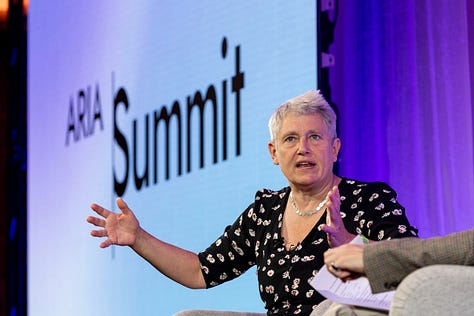
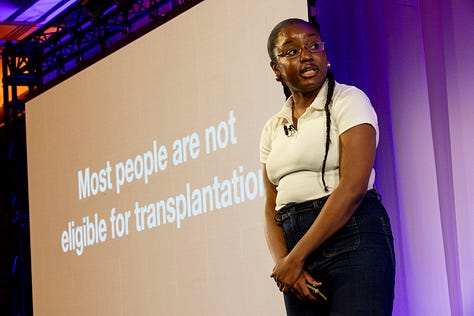
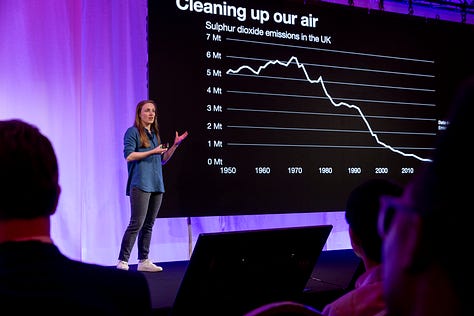
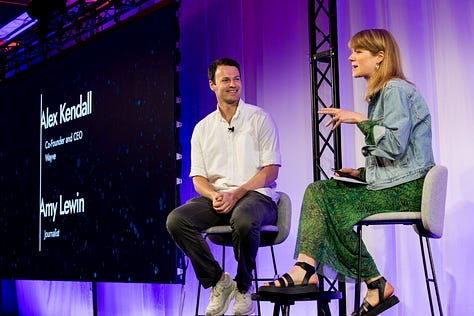
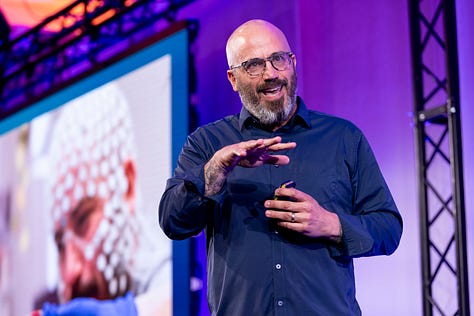
Reimagining Biological Paradigms: A Deep-Dive with Angie Burnett (Programmable Plants) and Nathan Wolfe (Bioenergetic Engineering)
With the launch of our latest opportunity space, Bioenergetic Engineering, and the announcement of the Creators in our Synthetic Plants programme, we’re spotlighting how Programme Directors Angie Burnett + Nathan Wolfe are pushing the boundaries of biology to transform society. Pranay Shah, ARIA Product Manager, sat down with Angie and Nathan to explore the thinking behind their theses — why it’s time to rethink long-held assumptions in biology, and how advances in synthetic biology are equipping us to deliver real-world impact through breakthroughs in plant and animal systems.
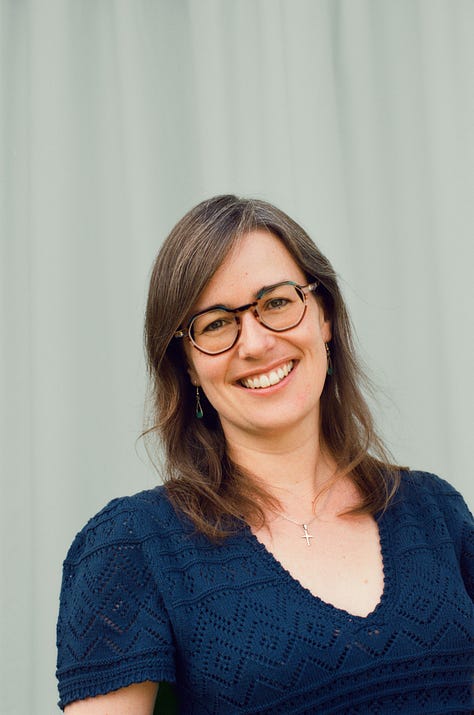
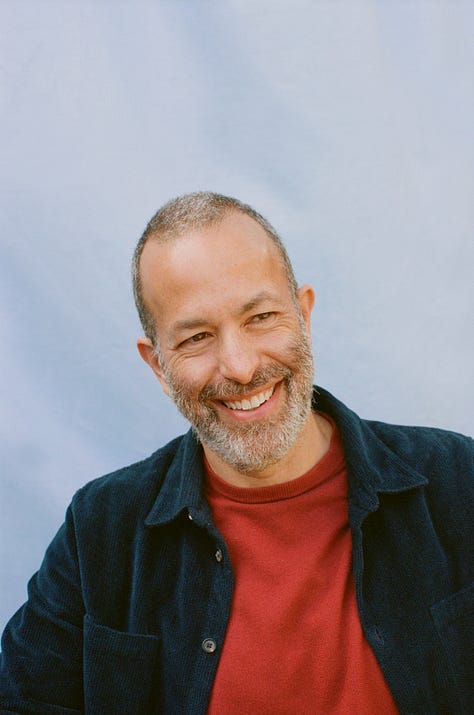

Pranay: Hi, Angie and Nathan – to start, could you each give us a brief background to yourselves and introduce your focus areas at ARIA?
Angie: Hi Pranay, I'm an ARIA Programme Director from the first cohort and my background is in plant biology. My opportunity space, which is a wide thematic space of high potential that we consider to be ripe for impact, is called “Programmable Plants”. In this space we're asking: how can we programme a plant to do anything we want it to do? Within this opportunity space, the main area I am exploring through a focused programme is “Synthetic Plants”. Through this programme, we aim to catalyse a new generation of major crops that are more productive, resilient, and sustainable.
Pranay: Thank you Angie. Nathan?
Nathan: Hi both, I'm a microbiologist by background, and since joining ARIA as one of the new Programme Directors a couple of months ago, I've pivoted to focus on Bioenergetic Engineering. The core idea of this opportunity space is that, similar to genetic engineering where we engineer information, we should also have the potential to engineer energy flows in living systems.
Pranay: Angie, a core belief in your programme thesis is the need for a paradigm shift to accelerate agricultural innovation. Could you unpack that for us? Where are we now, and where do you think we could be?
Angie: Definitely. Throughout history, agriculture has evolved, and we've made amazing advances in optimising crops for yield, nutrition, and ease of harvesting. Plants are incredibly important – they represent 80% of all biomass on Earth and provide us with food, fuels, pharmaceuticals, fibres, and vital ecosystem services. However, our climate is changing much faster than evolution can keep up, and our global population is surging. By the end of this century, we expect around 10 billion people, requiring an estimated 70% increase in our food supply – that’s massive. While technologies like gene editing have helped, I believe we need a bigger shift if we're to meet future food security needs in a changing climate. I see plants as an underexplored area with tremendous potential.
Pranay: How do we get to this vision? What technologies are you exploring in your programme?
Angie: Synthetic genomics offers a really exciting way to create new organisms from scratch. So this is something which we've seen in the microbial space through work with bacteria and yeast with amazing advances in the mammalian space coming through now too. But advances in plants and especially in crop plants have been minimal to date. So I see the field of synthetic genomics as being a really exciting way that we could imagine creating entirely new plants. My programme is funding technologies that could form the basis of synthetic genomes, specifically synthetic chromosomes and synthetic chloroplasts. These could add complex functionalities to crops that aren't easily achieved otherwise and act as stepping stones towards fully synthetic genomes. Imagine, maybe in a few decades, the quickest way to get a new crop with desired traits for a complex environment could be to design and create the crop from the ground up with an entirely new genome.
Pranay: You’re also funding broader, more speculative technologies through your opportunity seeds. Could you tell us about how these will drive your vision?
Angie: Yes, through our opportunity seeds, which will be announced soon, we’re funding research within the opportunity space but outside of the programme. So beyond the Synthetic Plants programme, we could be looking at a whole variety of plants, not just food crops – things like seaweed, algae, or trees. Techniques could range from those linked to DNA assembly to completely different approaches, like using beneficial microbes or even programming plants with different light wavelengths to change what a plant is doing to respond to its environment. Another crucial element is addressing bottlenecks like the slow and difficult process of getting DNA into plant cells. We're exploring ways to speed this up and find new methods, potentially even editing a seed directly rather than relying on laborious tissue culture. The goal is to find universal ways to do this, applicable to a broader range of species, including orphan crops important for climate resilience.
Pranay: Turning to you, Nathan. You joined ARIA at the start of April and have just released your opportunity space which is soliciting feedback. In ‘Bioenergetic Engineering’ you’re also proposing a paradigm shift, from engineering life's information to its energy flows. Could you describe this shift in more detail, and why it's needed for a better future?
Nathan: Sure. This goes back to Erwin Schrödinger's seminal work, What is Life?, where he identified two fundamental features of life: it accumulates and maintains order (what he called negentropy) by harnessing energy, and it requires information to pass over time in order to have that continuity. Following the discovery of DNA, biology focused extensively and productively on information, leading to tools for genetic engineering like CRISPR. However, for a number of reasons, energy has been left behind despite its fundamental importance to life. So the question my opportunity space asks is: what if we could also engineer energy flows within biological systems? This is what we're calling bioenergetic engineering. Just as DNA underlies almost all life, energy is equally important. Due to the decades of focus on information and relative ignorance of energy flows, the potential applications of engineering energy flows are hard to even imagine right now. We already know it would impact a huge range of human diseases but I believe there are societally transformational outcomes which we don't even know yet.
Pranay: This leads nicely onto the fact that energy systems in most life forms center on mitochondria and chloroplasts. How could we engineer these to create this paradigm shift?
Nathan: All our information-oriented tools can be applied to manipulate energy. That's one of the critical features we have now, we're doing synthetic genomics of chromosomes and bacteria, and the hope is that that will translate into being able to recreate the much smaller and seemingly simple genomes of these energetic organisms. Perhaps in a way that's analogous to the simplicity of the base informational system – we basically have two clones that are responsible for the vast majority of life's energy: cyanobacteria and chloroplasts – which share a common ancestor and have been reproducing asexually since that common ancestor, one in the cytoplasmic ocean and one in the ocean – and they’re responsible for a remarkable percentage of life’s energy capture from the sun. And then on the flip side, in a way that’s a bit of a mystery evolutionarily, we have Alpha Proteobacteria and their cousins, the mitochondria, which process that energy. If we can successfully engineer these two, which reproduce asexually, our ability to engineer energy on a massive scale is potentially vast.
Pranay: It sounds like tinkering with genetic information could help modulate energy flows. But do you also see ways to modulating energy without altering genetics? What other ‘languages’ of energy might there be, and what applications beyond diseases and therapeutics could this offer?
Nathan: Absolutely. There's fascinating work by a scientist named Hazel Szeto, using peptides – one example is a peptide that causes a conformational change in the inner mitochondrial membrane, increasing the energy flow through the system – again this is just a peptide and it doesn’t need changes in informational content like the DNA. This suggests a whole range of peptide-oriented approaches. Another area I'm particularly excited by is optogenetics. While genetics has been the primary delivery tool, the concept isn't inherently genetic. Optogenetics uses light-sensitive membrane proteins that act as ion channels and when you shine a light on them, they'll pump calcium, potassium, protons etc. It’s been used extensively in neurobiology, but recently it’s been uncovered that these can be used for completely independent purposes. And one of these wonderful new applications is the optogenetic proton pump that was introduced to the inner membrane of mitochondria. Normally, mitochondria and, by extension, all complex multicellular life, process energy by using oxygen to burn glucose. In the process of burning that glucose they create a proton gradient which is used to generate ATP, the universal energy currency for all life. The optogenetic proton pump allows for a proton gradient to be created just by shining a light, bypassing the need for oxygen or glucose When researchers put this into the C. elegans flatworm as a model organism they found they could increase longevity by 30% and improve motility in older age. It’s a fundamentally non-genetic, protein oriented way of manipulating energy.
Angie: It's almost a little bit like photosynthesis.
Nathan: Exactly!
Pranay: Angie – a key pillar of your Synthetic Plants programme is synthetic chloroplasts. We just heard Nathan describe designing mitochondria through synthetic genomes. Could you explain a bit more about what these are and how their generation might overlap with mitochondrial editing that Nathan was speaking about?
Angie: In both cases, we're engineering the central energy systems of life. Plant cells have both mitochondria and chloroplasts – the latter make glucose from sunlight, which mitochondria then convert to fuel cellular reactions. Both are organelles, small membrane-bound compartments, carrying out critical functions. Because they're hidden inside the cells, they've historically been harder to access for genetic engineering. Both have separate genomes from the main one in the nucleus, though many of the genes required for their function are encoded in the nuclear genome.
Nathan: Patrick Chinnery’s work on the movement of organelle genes into the nucleus is fascinating. It seems this continues to happen in real-time in humans, with bits of mitochondrial DNA constantly moving over, though most don't become functional. For mitochondria, at least, it's largely a one-way street due to the complexity of the inner mitochondrial membrane making it hard for nucleic acids to cross back in.
Angie: And when I say ‘synthetic chloroplasts,’ I don't mean artificially-built chloroplasts. I mean a chloroplast with a synthetic genome – its genetic material designed, built, and assembled synthetically in a bottom-up way, then put into an existing chloroplast whose original genome is removed. This is different from editing an existing genome; it’s about writing it anew. In terms of the application, looking at mitochondria there’s a strong focus on human health which is why it’s so exciting to see Nathan pioneering this opportunity space – in plants, it’s more around unlocking new traits and characteristics in plants. I actually had a decision to make around whether to bring mitochondria into my programme's scope but I opted to concentrate on just two plant units – synthetic chromosomes and synthetic chloroplasts. This gives us a couple of shots at the goal of building a synthetic genetic unit in plants.
Nathan: I should point out that botanists are always reminding all of us of the photosynthetic inadequacy of the rest of the organisms on the planet…
Angie: Except for the sea slugs!
Nathan: Except for the sea slug and the C. elegans… back to your point, I think that's one of the interesting potential kind of synergies and areas of really exciting overlap between these opportunity spaces is that you can certainly imagine if there is good success in the ability to create synthetic mitochondria, being able to utilise them in plants as well. So you can certainly imagine that maybe plants, because of the pioneering work you've done, will be among the first that have their entire energetic systems kind of controllable and engineerable.
Angie: We have our different opportunity spaces but at ARIA we see our spaces as a sort of honeycomb of spaces next to each other – maybe we'll have the opportunity to bring some of our Creators working on synthetic mitochondria and synthetic chloroplasts together to work on plant mitochondria!
Pranay: Building on the theme of bringing together researchers, it sounds like these ambitious goals require broad collaboration with academics, corporates, and industry. How important are these partnerships for your programme Angie?
Angie: Hugely important. A key element of my programme is bringing together synthetic biologists and plant biologists. It’s been exciting to see synthetic biologists attracted to this space – ARIA can fund any type of institution and individual, so the partnerships I'm seeing will be crucial for translating research into the real world. Our amazing Activation Partners are also instrumental in uniting different organisation types and also helping the creation of whole new organisations, and help catalyse impact as a result.
Pranay: Catalysing impact is a key feature for all our programmes so Nathan, with your background as an entrepreneur, what kinds of real-world impacts could stem from breakthroughs in your area?
Nathan: Since energy is so fundamental to all of life, it’s almost impossible to imagine all of the possible applications that could emerge from these kinds of technologies. I have a colleague who discusses diseases of information versus diseases of energy. Sickle cell anaemia, a single base pair mutation, is an informational disease – if we’re able to repair that we’ll have the potential to just solve that disease. But if you take a look at some neurodegenerative diseases, and even the process of ageing, it seems like information alone is unlikely to be a solution. We can see strong links between mitochondrial dysfunction, which accumulates over age, and many of these diseases – so, the human health significance is substantial. Beyond that, consider bio-hybrid devices – engineering organelles or artificial energetic systems that use biological energy sources like fat and sugar to power biological motors linked to technical devices, allowing us to engineer at a fundamentally different scale.
Pranay: Very cool. To finish, what are you both most excited about in your areas, and how can people engage?
Angie: I'm super excited because people can now learn about the Creator teams and projects we're funding. Not only are we bringing together academic and industry scientists from across the UK, we've also attracted world-leading researchers from all over the globe to collaborate with UK centres of excellence. In the first three years of the programme, these teams could very well build the world’s first synthetic plant chromosome, alongside leading deep public engagement around these new technologies. Many of these teams will be hiring, so if you're interested in working in this space, check their websites for positions. And stay tuned for more funding opportunities. Our Activation Partners will also be hosting events and creating a translation ecosystem around the space which people can engage with.
Nathan: My opportunity space, Bioenergetic Engineering, was published recently and I am seeking feedback on it. Because bioenergetic engineering is such a broad area, and is so relevant to biophysicists, engineers and a huge range of other technical disciplines, what I'm really excited by is the hope that people from many subject areas will engage with this opportunity space. In particular, I think an extensive range of opportunities exist within the space and I’m seeking input from all different fields to provide ideas input so that we can help to sort of define potential programme areas of high impact.
Pranay: Fantastic. Thanks so much to you both.
You can find out more about the Creators working in the Synthetic Plants programme here. We also recently launched Nathan’s opportunity space, Bioenergetic Engineering – read it and give feedback here.



